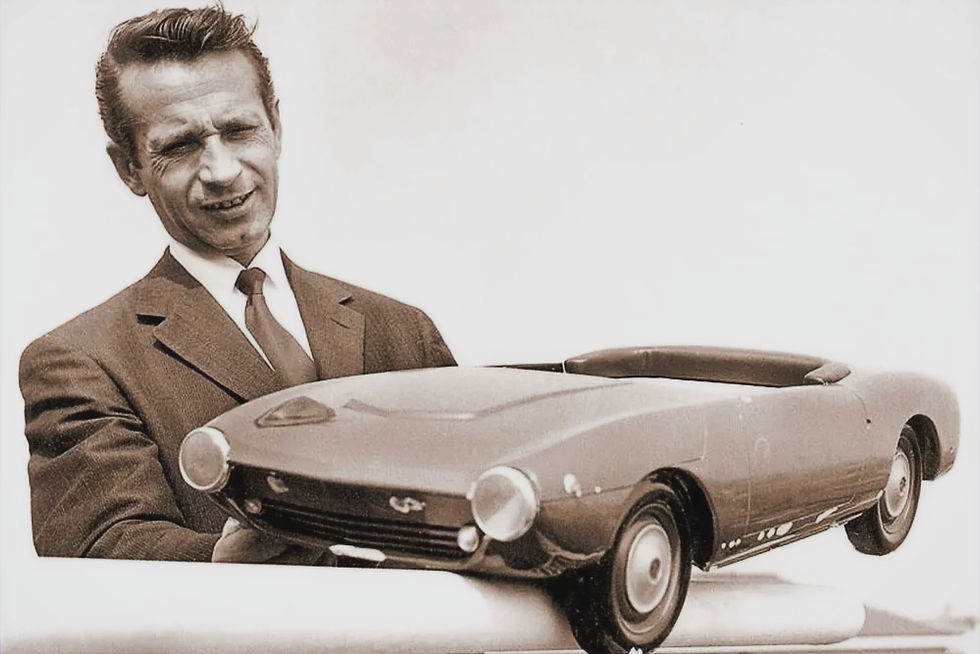Giovanni Michelotti: The Italian Job

In the 1950s, the British motor industry had a bit of an image problem. It was brilliant at engineering, but it was, with a few notable exceptions, absolutely rubbish at styling. Most British family cars of the era seemed to take their design cues from biscuit tins. Most British family cars of the era seemed to take their design cues from biscuit tins. They were frumpy, upright, and profoundly unbothered by anything resembling flair. What the industry needed was an injection of flair, a dose of Continental chic, the magic of a beautifully sculpted line. What it needed, desperately, was an Italian. And the Italian it got was a quiet, prolific genius from Turin named Giovanni Michelotti.
Michelotti was a freelance car design superstar. He was a man with a golden pen, capable of sketching breathtakingly beautiful cars for the greatest Italian styling houses like Vignale and Ghia. And then, in the late 1950s, he got a phone call from a deeply unfashionable and deeply sensible company in Coventry called Standard-Triumph. It was one of the most unlikely, and most brilliant, partnerships in motoring history. The Italians, it seemed, were coming to save the British from their own bad taste.
From Biscuit Tins to Beauty
The first fruit of this new relationship was the 1959 Triumph Herald. Before Michelotti, a small British family car was a miserable, potato-shaped thing. The Herald was different. It was a crisp, light, and airy design, with sharp lines, a huge glasshouse, and jaunty little tailfins. It looked like it had just arrived from the Riviera. Underneath, it was still a simple, body-on-frame British car, but on the outside, it had a dose of genuine Italian glamour. It was a colossal hit.
This was just the beginning. Michelotti effectively became Triumph's in-house designer, despite living in Italy. He took the humble Herald chassis and, with a few strokes of his pen, turned it into one of the prettiest sports cars of all time: the Triumph Spitfire. The Spitfire looked like a baby Ferrari, but it was cheap to buy and cheap to run. It was a masterpiece of smoke and mirrors, a car that delivered a champagne lifestyle on a beer budget.
Redefining the British Sports Car
Having sorted out the small cars, Michelotti then turned his attention to the big stuff. He took the rugged, hairy-chested Triumph TR sports car and gave it a new, sophisticated, and thoroughly modern suit of clothes. The resulting TR4 was a beautiful, muscular machine that transformed the TR's image from a crude club racer into a proper, grown-up sports car. He had managed to make a typically British brute look elegant, a bit like teaching a rugby player how to ballroom dance.
He wasn't finished. He penned the handsome Triumph 2000 saloon, a car that became the definitive British executive express of the 1960s. And he designed the beautiful Triumph Stag, a four-seater convertible GT car with a unique T-bar roll hoop. The Stag was a magnificent-looking machine, a car that looked like it should have been driven by movie stars along the French coast. It was, unfortunately, let down by a typically British engine that had a tendency to self-destruct, but it looked good while it was waiting for the recovery truck.
The Man with the Midas Touch
For a decade, Michelotti was the man with the Midas touch. Everything he drew for Triumph turned into a sales success. He had an uncanny ability to create designs that were beautiful, practical and, crucially, cheap to build. He was a rare combination of a brilliant artist and a pragmatic engineer. He gave a whole generation of British cars a sense of style and confidence that they had been sorely lacking.
His influence extended beyond Triumph. He did design work for other, smaller British firms, like Reliant and even the oddball coachbuilder, Bond. But his legacy will forever be defined by that incredible run of hits he produced for the company from Coventry.
The End of the Affair
By the early 1970s, the golden age was over. Triumph, now buried deep inside the chaotic mess of British Leyland, was being run by committees. The era of a single, brilliant designer having the power to shape an entire company's identity was gone. The last great Triumph that Michelotti was involved with was the Dolomite saloon. After that, the partnership fizzled out. The cars that followed, like the dreadful, wedge-shaped TR7, were designed in-house, and they showed it. The Italian magic was gone.
Giovanni Michelotti died in 1980, leaving behind a legacy of breathtaking beauty. He was the quiet Italian who, for a glorious decade, was the secret weapon of the British motor industry. He was a man who proved that even the most sensible and mundane of cars could be made to look special. He was the man who taught Britain how to be stylish.
